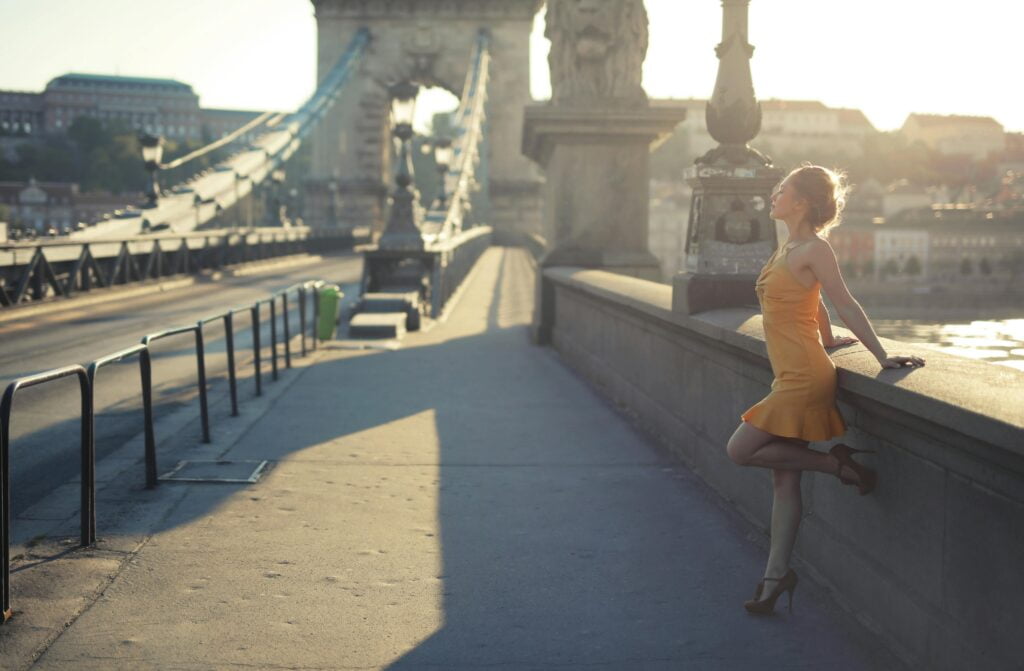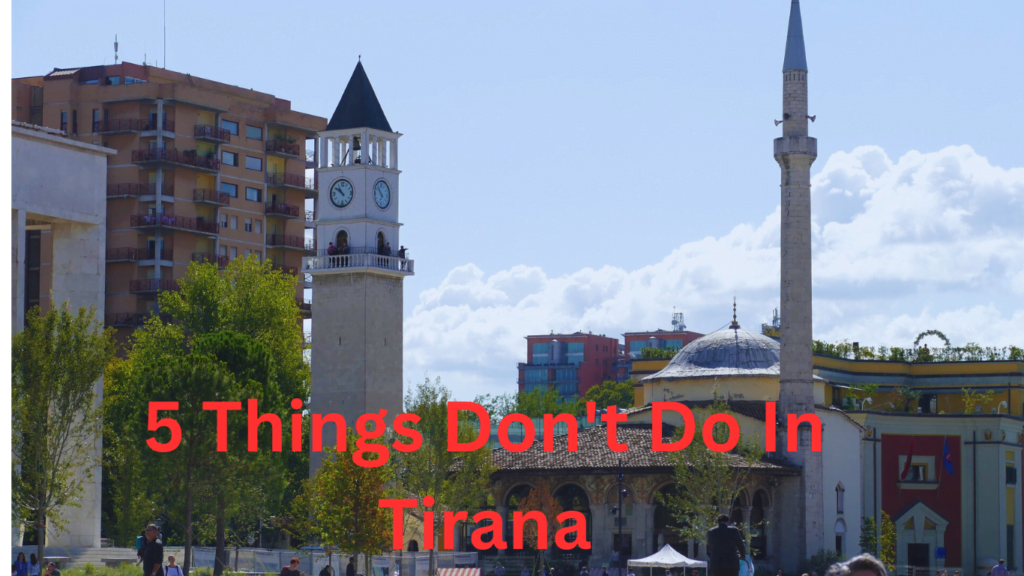Are you looking for ways to save some money on your next trip to Budapest? Do you have questions like, “Can I taste the local flavors without spending a fortune in fancy restaurants?” or “Should I use the public transport pass, or am I good with just single tickets?” and “How do people want to take my valuable tourist money?” Well, in this blog, we’re going to cover those questions. Let’s do this.
Table of Contents
ToggleWhen to visit
Because I’ve visited there many times, the tips are the same as I mentioned in my Poland, Croatia, and other European blogs. March is the most affordable time to visit, but personally, I prefer April, you know. Another best time is from September to November; this is when clouds are fewer and the weather is warm and “The winter is coming,” haha, jokes aside.
Airport To City
When you come to Hungary, chances are you’ll land with a plane at the Ferenc Liszt International Airport, and since it is not located right in the city, you will need to find a way to get from there to the heart of Budapest. Getting a taxi feels like the most convenient option as it takes you directly to your hotel, but unsurprisingly, it will also be the costliest, with a price around 12,000 Hungarian Forints ($34.70).
However, there are some ways to reduce that cost. For instance, there is the mini-bus service. This may be an ideal option for families and larger groups since the prices are per person. For example, if there are 8 people or more, the price goes all the way down to 2,500 Forints per person, which altogether is much cheaper than 3 or 4 taxis. But in the case of solo travelers or smaller groups, perhaps public transport is the best way to save some coins. The special service bus, 100E, has a ticket price of 2,200 Hungarian Forints or $6.50, and it takes you directly to the city center. Just remember, public transport passes are not accepted on the 100E bus, but as a new feature, you can use tap and pay with your credit card on the bus.
Now, if you wish to further reduce your cost, take the regular public transport bus, 200E. The regular ticket is accepted, which is 450 Forints, especially on the outskirts. From here, you’ll need to use another single fare ticket to get into the city. Perhaps that is the most adventurous and longest way to get into the city, but it’s also the cheapest, costing roughly 2 and a half USD altogether. So, we can save some money for a beer later that evening.
Public Transport
Now that you are in the city, it’s time to get around. If you enjoy walking, you’re gonna love Budapest because it’s really walkable. But in case you want to save some time on traveling around, the public transport is cheap and easy. And if you are like me, who loves to plan a lot ahead, you may even be able to save some money. The daily passes are generally the easiest options, but take a look at their prices. If you buy a 24-hour pass that costs 2,500 Hungarian Forints, however, if you use it less than 6 times, it’s cheaper to buy single tickets. And when you buy a 72-hour pass for 5,504 Hungarian Forints, you’ll get your money’s worth if you use the public transport more than 12 times, or on average more than 4 times a day. However, if you stay longer than 3 days, then perhaps you can look at the 15-day long pass. I know 15 days could seem long, but it’s only 8,000 Forints, so even for 4 days, it’s really worth it.
But in general, if you plan your days and see how many times you will actually use the public transport, you may be able to save on your costs with the single tickets. For planning, you can use Google Maps or the Budapest Transport app, but you can also buy digital tickets and passes when you are here. Regarding single tickets, there’s one more tip: they are valid for the whole subway network, which means you do not need to validate another single ticket if you want to transfer from one line to the other.
But there is another fun and cheap way to explore the city, and I’m not talking about buses; I’m talking about these lovely bicycles. They are called MOL Bubi, and their base price for a month is 1,000 Forints. However, you must make sure that the time from the pickup point to the drop-off point of your travel should not exceed 30 minutes. It’s a really fun and cool way to explore the city and maybe feel like a local.
How to Find Budget Foods
When you travel, one of the things you will definitely spend money on is food. Now, if you come to Budapest and want to taste the local flavors without spending a lot of money, luckily there are some options. One of them is to look for restaurants that have daily set menus. While the portions may not be super huge, the prices may be the cheapest. Eating à la carte, just so you know, these menus may only be available for lunchtime on weekdays and your choice will be very limited, but you’ll surely get something tasty for less money. However, if you still wish to have the power of choice, you can also go to eateries with food counters where you can choose from ready-made dishes and pay less than in a proper restaurant. The food selection may be simple, but there surely will be something Hungarian to try.
Chimney Cake: Must try!
One more tip about food is related to chimney cake, a sweet delicacy that you must try if you come here. Many shops in the city center unfortunately add the so-called tourist tax to their pricing, but chimney cake is a simple food item. If you walk around Budapest, especially at major train stations and subway stations, you can find small booths selling them for half the price. And here’s a side-by-side comparison: one of them costs $4.34, the other $2.17. I mean, the length looks the same; one of them is actually a little bit thicker and maybe looks more gorgeous because of the amount of walnuts. So, decide which cake you want.
The Famous Market Central Hall
And here is a market hall, and you might be wondering that Market hall price is expensive. But the thing is, I would still recommend visiting that famous market because of the way it looks on the inside. But besides visiting and having a look, I wouldn’t really spend money there on food and souvenirs. To be honest, the place is more of a tourist attraction than something catering to locals. However, if you wish to have a local market experience, there are many smaller and cheaper places around the city where you can also grab something to eat with better quality and a cheaper price tag than in the popular Central Marketplace.
Thermal Bath
Going to a thermal bath is definitely an experience we can highly recommend for you to do, and places like Széchenyi Thermal Bath or Rudas Bath offer probably the most Instagrammable experiences thanks to the gorgeous architecture in the backdrop. However, they will also be the most expensive. Luckily, if you want to focus on the hot waters, you can save some money by going to the smaller, less-known establishments. These include places like Lukács Bath or Dandár Bath. Some of the traditionally outdoor baths and swimming pool places like Palatinus or Csillaghegyi Bath also offer thermal baths, and the cost of some of these places may be just a third of what the big ones are asking for. Perhaps if you go to some of these, you will not get your Instagram picture, but you’ll definitely save some money and have some quality relaxing time in the thermal waters.
A trick: if you want to go to a famous thermal bath, there’s an option to save some money. Before 9 am, the ticket is cheaper, like you can save $5-6 there, but for a backpack traveler, it’s still expensive, like almost $19. So, do your math if you want to go.
Museums: Most of them are free
Budapest has some interesting and unique museums you can visit, like the House of Terror, the National Art Gallery, or the Museum of Fine Arts. Many of these museums in the city offer free entry to their permanent exhibitions for families and people under the age of 26 on specific days of each month and Hungarian national holidays and perhaps one of the days of your visit aligns perfectly with a date when there’s free entry. Two of the museums that interest you: there is also a very unique event each year called the Night of the Museums where for one chief ticket, you can visit almost any museum here in the city starting from late afternoon deep into the night.
Cost cutting for Sightseeing
When it comes to sightseeing, there are many enthusiastic people who offer free walking tours that you can join. While it’s called free, it’s customary to honor the tour guide with some tips at the end of your journey. It’s totally up to you how much you tip, but if you go for a paid walking tour, you’ll be spending around $30 to $60 per person. However, if you tip $10 or $15 at the end for a free walking tour, you’ll be saving some money.
So, the Fisherman’s Bastion is one of the most attractive locations in Budapest for tourists, and if you wish to go off the beaten path, you’ll need to buy a ticket, which is 1,200 Hungarian Forints or $4,20. If you go before 9 o’clock in the morning or after 9 in the evening during summer, you can enjoy the nice view for free and also have fewer people. This isn’t just a tip for those who wish to spend less but who may also look for a romantic spot as well.
Now, for the last tip about sightseeing, let’s focus on the Danube River. There are many river cruises that offer trips along the river where you can get some excellent views of the gorgeous buildings. The ticket prices will be more expensive for evenings since that’s the most popular time with the lit-up buildings. But here’s the thing: I personally think that just walking on the banks of the Buda side and the Pest side, you can get a better and more relaxing experience at your own pace. Perhaps this may cost a little bit more of your time, but for sure, it will keep $20 in your pockets.
Free Water: Also save the Environment
During walking tour, you may need drinking water. Budapest is blessed with some excellent quality water, so if you happen to find a lovely fountain on the street, you can refill your water bottle. Probably not just a good way to save some money but also save the environment because you know less plastic garbage. By the way, if you use the Budapest Water app, you can actually enable a feature that will show you where public fountains are located in the city. Alternatively, there is the “VízIn” application, which means “water reservoir” in English, which shows you establishments where you can find fountains by showing the app, they will fill your bottle with water for free.
Top of Form
Budapest Card
Now I’m just gonna come out and say it: I’m not a huge fan of the Budapest Card, but that doesn’t mean that you can’t necessarily save some money with it. The way the Budapest Card works is that besides being a regular public transport pass, it also gives you many different perks at different attractions. Entry to some will be completely free, and some will offer a level of discount. So, we tried to figure out if the Budapest Card is worth it or not. We did the math, and here is the breakdown:
- The 24-hour card: Quick and easy to forget, it just shouldn’t exist, to be honest.
- When it comes to the 72-hour and 72-hour plus cards, you can technically save money. However, there is a big but. First of all, you need to spend a lot of money. The basic 72-hour card is roughly €60, and the plus is almost €100. If you plan a super detailed schedule for yourself for 3 days, visiting thermal baths, museums, enjoying walking tours, you can technically save money. We saved about €12 with a plan for the 72-hour card.
- As for the 72-hour plus card, there are some more perks like mini bus service from the airport, a river cruise, and other discounts. There, you can technically save around €4. But, and here is the but, you’ll need to plan a lot, your days will be super packed, and you need to go through it at a breakneck speed. So, can you save money with the first card? Yeah, but it will be challenging.
Budget-Friendly Accommodation
And finally, after spending an entire day exploring the city and having fun, you probably need a place to stay. Probably not in the middle of the city. It may not shock you when I say that hotels and Airbnbs will be the most expensive in the middle of the city. But if you start looking for accommodation away from the center, you can save some money with cheaper hotels. I would suggest looking at the subway lines, the tramlines like 4 and 6, or major bus lines like 7 or 5, since using these public transport options can quickly get you into the center and you can also save some money on your accommodation.
So, that’s a quick information for whom want to travel Budapest also most parts of the Hungary on a budget. Thank You.





